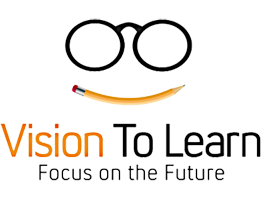- A new study by Johns Hopkins on the impact of providing glasses to children at schools shows dramatic gains in learning.
- The research is based on the largest controlled study in the U.S., as more than 7,000 children from over 100 schools in Baltimore were included.
- The children who showed the biggest gains, the equivalent of four to six months of learning, are those who are often the hardest to help – students in the bottom quarter of their class academically and students with learning differences and disabilities.
A groundbreaking study just published in The Journal for the American Medical Association Ophthalmology by researchers from the Center for Research and Reform in Education and the Wilmer Eye Institute at Johns Hopkins University shows the impact of providing glasses to children at schools. The researchers conducted the largest and most rigorous study in the U.S. to measure the impact of providing eyeglasses to students directly in their schools. Thousands of children from more than 100 schools in Baltimore participated in the study. Guess what? The children who received glasses did better in school and the impacts were greater than more costly measures such as lengthening the school day, providing computers, or creating charter schools. The children who showed the biggest gains, the equivalent of an additional four to six months of learning, are those who are often the hardest to help—students in the bottom quarter of their class academically and students with learning differences and disabilities.
Since its founding in 2012, Vision To Learn has helped provide more than 1.2 million children with vision screenings, 300,000 with eye exams and almost 250,000 with glasses, in more than 500 underserved communities across the country – all free of charge to children and their families. This year another 100,000 children will receive glasses despite the challenge COVID-19 continues to present at schools.
The problem is not a new one. About one in four children, whether from a family with means or a family struggling to get by, will naturally need glasses. Children who need glasses and don’t have them are more likely to be misdiagnosed with behavioral issues in kindergarten, be considered “slow” learners by 5th grade, and to drop out of high school. Unfortunately, in low-income urban and rural communities, most children who need glasses don’t have them due to financial constraints, language barriers, unresponsive health bureaucracies or the simple fact there are no eye care professionals in their neighborhood. This program solves the problem by bringing the glasses to the kids where they are almost every day—their local neighborhood school.
Here’s how it works. Vision To Learn visits schools, where their staff teams up with classroom educators, school nurses and public health departments to make sure every child receives a vision screening. For children who don’t pass the screening, Vision To Learn vans, staffed with trained eye care professionals, visit schools to provide eye exams and glasses. All free of charge to the child and their family.
COVID-19 has had a disproportionate impact on communities of color and recovery efforts must address the disparities that have been exposed. In most cases, the best place to provide services to families who are struggling to get by is at their local, neighborhood school.
Austin Beutner, Founder and Chairman of Vision To Learn said, “At a time when our country is struggling to figure out what a just and equitable future should look like, this effort to connect healthcare needs with education outcomes provides a good start.” He added, “Our mission is to make sure every child has the glasses they need to succeed in school and in life.”
“This study, grounded in thorough and rigorous research, has proven our most fundamental assumption… that providing kids glasses in their schools will significantly improve academic success,” Johns Hopkins University President Ron Daniels said. “These results validate the dedication of all of the program’s committed partners, from the principals, staff, and teachers across Baltimore City schools to the optometrists at Vision to Learn and the school vision advocates from Johns Hopkins.”
JHU study senior author Dr. Megan Collins, pediatric ophthalmologist from the Wilmer Eye Institute said, “The Hopkins research study demonstrates how school-based vision care improves vision and learning for students in need. School-based vision care is a simple, yet effective way to help children see more clearly and achieve more academically.”
“This is how you close achievement gaps,” added study lead author Amanda J. Neitzel, deputy director of evidence research at the Johns Hopkins Center for Research and Reform in Education.
Read more on the The Hub.

